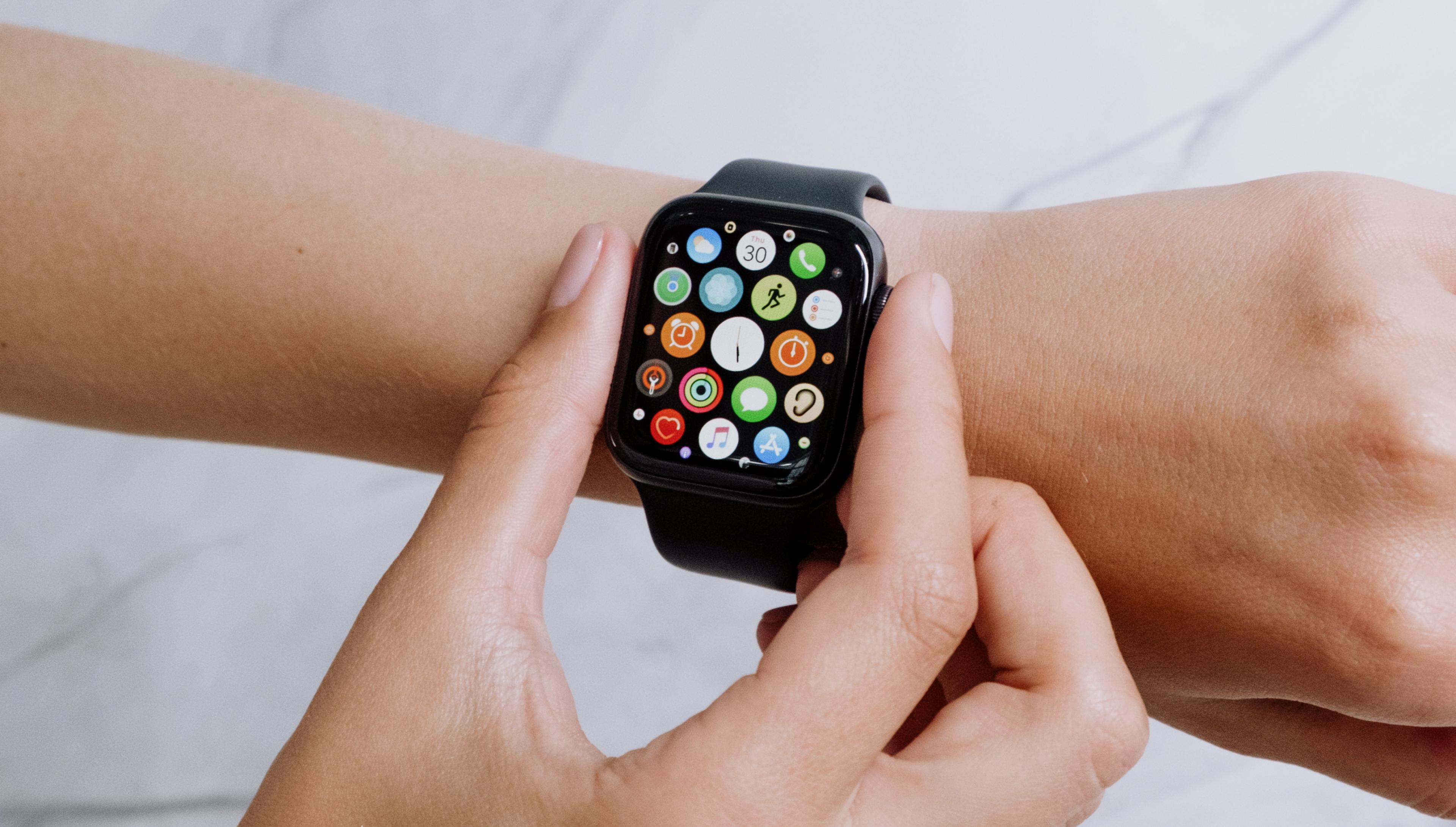
The Internet of Medical Things: A quick start guide

Almost two centuries have passed since Charles Baudelaire's bohemian suggestion on how to escape the clutches of time. Time, the French poet argued, bruises our shoulders, grinds us into the earth, and ultimately kills us.
The contemporary healthcare industry, however, begs to differ: Time is your best friend (and might well save your life) if you keep your smartwatch close to your arrhythmic heartbeat. In fact, smartwatches and other wearables like fitness trackers track over 7,500 physiological and behavioral cues to create an informed map of how healthy we are — and form a critical part of the technological ecosystem known as the Internet of Medical Things (IoMT).
But wristbands are just the consumer-ready tip of the iceberg. Deeper down, IoMT devices are a mainstay for healthcare companies aiming to improve the quality of life of patients in a host of ways.
What is the Internet of Medical Things?
The IoMT is an ecosystem of connected gadgets and machinery, including consumer wearables like fitness trackers and smartwatches, embedded devices like pacemakers, and large stationary medical devices like MRI machines. IoMT devices rely on cloud computing environments and software that are invisible to the user and collect and manage their data; AI technology can analyze and interpret the data further for trends and insights.
If forecasts hold, over 7.4 million IoMT devices will be active in smart hospitals worldwide by 2026, an increase from 3.2 million in 2021. Naturally, this soaring demand has caught the attention of big industry players and investors, with the global IoMT market value predicted to reach over $187B by 2028 — a CAGR of 29% between 2021-2028.
What are the use cases and benefits of the IoMT?
IoMT devices are designed to increase accessibility and reduce healthcare costs through automation that can personalize care for patients at scale. Benefits of note include:
Healthcare automation
According to the Association of American Medical Colleges, a shortage of as many as 124,000 physicians is expected in the United States by 2034. This scenario suggests that automation in healthcare will become increasingly crucial to compensate for the lack of providers.
Repetitive tasks such as scheduling patient appointments and follow-ups are easy to automate, but at the more complex end of the spectrum, IoMT technology that incorporates AI can increase the speed and reliability of diagnosing illnesses.
Remote patient monitoring
Among American adults, chronic disease is the norm: 60% of the adult population has a chronic disease and 40% has at least two, a state of affairs that costs the nation over $4 trillion in healthcare costs annually. More recurrent patients means extra stress on the healthcare system (hello, ER visits), which inevitably raises costs even more for both providers and patients.
That's where the value of wearable devices comes in: Patients can still get quality routine care without as many trips to the doctor's office and stay on top of prevention. Consider, for example, one controlled study reported in Nature in which participants suffering from coronary artery disease used a mobile app that was integrated with a Bluetooth blood pressure cuff and an Apple Watch. This intervention was calculated to save as much as $6,000 per patient. At scale, that represents billions in healthcare cost reductions every year on remote patient monitoring alone.
Smart pills
Schizophrenia, Alzheimer's, depression, and high blood pressure are among the many conditions that demand compliance with medication schedules from their patients.
IoMT innovations such as FDA-approved smart pills like Abilify MYCITE help by using small sensors lodged inside the capsules to monitor blood levels. The sensors send a signal to a patch worn on the patient’s body after the smart pill is ingested. Then, the patch syncs with a smartphone app and shares data on compliance with the healthcare provider so they can better personalize care.
The smart pill market is steadily growing and is expected to reach $6.3 billion in 2027.
Robotic surgery
Methods such as the da Vinci surgical system have made robot surgeries surprisingly commonplace nowadays, with over 10 million surgeries performed worldwide in the past two decades or so.
The efficiency of robotic surgeries, when compared to their traditional counterparts, depends on the patient's condition, but the range of surgeries that can be performed by robots expands every year. Soon, we can expect miniature robots capable of performing procedures under the remote command (yes, another flavor of IoMT) of trained surgeons located anywhere around the globe.
Mobile health apps
When combined with consumer-grade wearable devices or medical-grade sensor implants, mobile health apps can gather a trove of medical data — and fuel a market growing at a CAGR of 27%. This data can help individuals track data such as activity levels, heart rate, and blood glucose that can be shared with medical professionals to help inform diagnosis and treatment plans.

Challenges for the Internet of Medical Things
Even with all of these benefits, the IoMT market has its own set of challenges to overcome. The most glaring include:
Interoperability
With the sheer number of new medical devices coming online, there will be a need for new standards to ensure their interoperability with software. If multiple devices can't be synchronized to automate the management of electronic medical records and improve the accuracy of a patient's prescribed treatment, then their power is dramatically limited.
Getting interoperability right will demand coordination between medtech companies that produce open APIs and government agencies that create regulations to direct interoperability standards. The US Office of the National Coordinator for Health IT is already on it, as per its stated goals for 2030.
Data security & regulations
Medical information, by its very nature, is some of the most personal and sensitive data there is. Legitimate concerns have been raised regarding how many of the devices, particularly MRI, dialysis machines, and other connected care stationary medical devices, appear to have security vulnerabilities.
Healthcare privacy laws such as HIPAA do cover a lot of ground in protecting patients' rights, but technology moves at a faster pace than legislation. Without broader security accountability by the medical devices' manufacturers, data breaches are a matter of when, not if.
Data ownership
There's no consensus on the fundamental issue of who owns the data that IoMT devices generate. Is it the patient since it's from their body? Do the medical facilities that collect the data own it? What about the medtech companies that process it? It's a thorny issue with no obvious answer.
The multiple possible approaches to ownership of IoMT data all but guarantee that some sort of government regulation will be required to settle, or at least direct, the issue. The longer finding a resolution takes, however, the more the customers’ data could be subjected to the goodwill of companies without individuals having a say on it — a scenario with far greater implications than social media companies targeting us with aspirin ads during a flu.
A need for medical expertise
Unlike other industries being revolutionized by the IoT, the Internet of Medical Things needs to be developed with the assistance of those with medical expertise. However, the time and expense required for this knowledge to be created and obtained make it a finite resource — meaning that a shortage of medical professionals in this field can create a bottleneck for IoMT development.
Technical challenges
There are also the technical challenges that come with the inclusion of millions of new connected care medical devices to servers worldwide and the sheer scale of the volume of data they produce.
The efficacy of IoMT technology depends on advancements in AI, machine learning, and particularly big data. The better data processing and analysis become, the more accurate diagnoses and treatments will be.
Thankfully, time is on healthcare's side: All those tech disciplines have been evolving, in ever-larger steps, to become the lifeblood of not only the IoMT ecosystem but modern healthcare as a whole.
Healthcare's IoMT-powered future
Groundbreaking concepts aren't accepted overnight. It can be even harder for new ways of approaching problems to gain traction when they rely on a substantial behavioral shift in large groups of people — or entire systems.
It took the world a pandemic, despite one hundred years of technological advancements, to break the 20th century's office model mold and normalize working from home. Likewise, the idea of entrusting one's health to gadgets, apps, and AI-powered virtual assistants might sound scary now for some, but is in fact a short corner away from becoming commonplace.
It's already happening: COVID-19's impact on remote work was mirrored in how healthcare is approached. Healthcare facilities have, out of necessity, accelerated their adoption of IoMT to a point where hospitals and clinics accounted for over two-thirds of IoT's global market share in healthcare back in 2020.
Today, avant-garde healthcare technologies enable robots autonomous enough to operate on eye tumors. And tomorrow?
They, who live, shall see.





